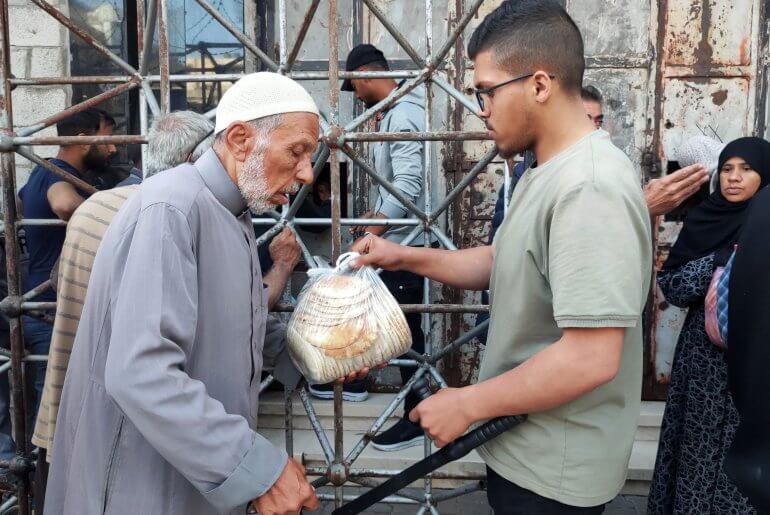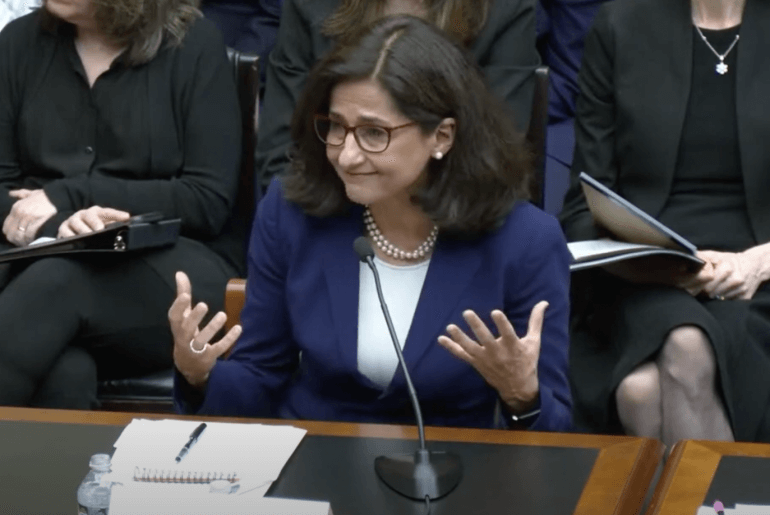In May 2022 the Israeli Supreme Court ruled to expel hundreds of Palestinian families living in the South Hebron Hills of the occupied West Bank, known locally as Masafer Yatta, and hand their land over to the Israeli military.
The army has used huge swaths of the land as an active firing zone for years, putting the local communities there at risk. Now, with the backing of the Supreme Court, the army has the power to expel an estimated 1,300 Palestinians from the area, and completely demolish eight villages.
Rights groups say it’s an act that would amount to forcible transfer, a war crime under international law.
“This court is oppressive and racist, and only supports the Israeli side, period,” Sami Hureini, a local activist and resident of Masafer Yatta told Mondoweiss.
“After twenty years in the courts, from 2000 until today, the decision has never changed, that is the biggest injustice,” Hureini continued.
“The people provided all the historic proof of ownership over this land. But the occupation threw all of this away. There is no such thing as justice in this court.”
Firing Zone 918
Masafer Yatta is home to a number of Palestinian herding communities, who reside in several small villages and hamlets. The residents date their presence in the area to several decades ago, before the area was occupied by Israel in 1967.
In the 1980s, Israel declared the 3,000 hectares in Masafer Yatta as an active firing zone for military training, dubbing it Firing Zone 918. Within the boundaries of the firing zone were 12 inhabited Palestinian villages.
In 1999 the Israeli military expelled all of the residents of Masafer Yatta, numbering around 700 at the time, on the grounds they were “illegally living in a firing zone”. In response, the families petitioned to the Israeli Supreme Court, marking the beginning of their 20-year legal battle.
Following the petition, the court issued an interim injunction allowing the villagers to return to their homes and use the land for agriculture purposes, but banned them from any new construction, including homes or essential infrastructure like power or water networks.
In the meantime, the military continued to use the land as a firing zone, conducting live training exercises using everything from tanks, helicopters, bombs, rockets, and live fire.
The army also continued to enforce home demolitions in the area. According to Israeli human rights group B’Tselem, since 2006, Israel has demolished 64 homes in the communities in Masafer Yatta, displacing at least 346 people, including 155 minors.
Residents say that the army uses the firing zone designation as part of a larger policy of trying to kick Palestinians off the land.
“They try to convince the world by saying it’s a firing zone for the army. But the occupation chooses to come to an area where people are already living, and declares it as a firing zone for military training,” Hureini told Mondoweiss.
“The firing zones are used as an excuse to displace the people, nothing more, nothing less.”
Newly revealed documents back up the claims of the Palestinian residents. Minutes from a “top secret” 1979 meeting revealed former Israeli Prime Minister, then-Agricultural Minister, Ariel Sharon explaining that he created firing zones across the West Bank for the sole purpose of “creating land reserves for [Jewish] settlements.”
Settler violence
While the Palestinians in Masafer Yatta live under constant threat of expulsion, there are hundreds of Israeli settlers in the area who live very different lives.
There are 10 Israeli settlements and outposts in Masafer Yatta, dotted along the border of the firing zone.
Under international law, these Jewish-only settlements are illegal. Yet over the years, the Israeli government has continued to promote settlement expansion in the West Bank at a rapid rate.
And while the Palestinians living in the area are largely prevented from building homes, and accessing basic resources like water, electricity, and paved roads, the Israeli settlers are offered government subsidized housing, running water, electricity, and exclusive roads built only for settler use.
“The settler gets everything he needs: water, electricity, and unlimited resources. It’s as if he’s living in Europe, not on occupied land,” Hureini told Mondoweiss from the hill in his village of at-Tuwani, overlooking the Israeli settlement of Ma’on.
“In the same area, there are two different systems and laws for two different people. This is part of Israel’s apartheid system that is imposed on us on a daily basis,” he said.
The Israeli settlers in Masafer Yatta frequently attack Palestinians, their homes, and their livestock. Residents say the attacks happen on a daily basis, and often take place under the supervision of Israeli military and police.
Israeli settlers are rarely ever charged or investigated for attacks committed against Palestinians. According to Israeli rights group Yesh Din, 92% of investigations into settler attacks on Palestinians are closed without indictment.
‘Where will we go?’
Majda Abu Sabha is one of the residents of the Khirbet al-Fhakheet, a small hamlet that lies deep within the firing zone.
In the past year, the Israeli military has destroyed her home three times, with the latest demolition taking place just a few weeks ago. Now, she lives in a tent next to the rubble of her home.
“They came suddenly. We were busy with our work. There were bulldozers, trucks, and soldiers. It was indescribable,” Abu Abha told Mondoweiss, recounting the most recent demolition of her home.
“They came in with force. They didn’t allow us to remove our belongings or furniture from our homes. We had our children, and our livestock. They slept out in the open,” she said. “They didn’t leave behind a single tent, or home. They even destroyed our tents.”
Just under 900 structures are under imminent threat of demolition in the firing zone. Those structures include homes, livestock pens, latrines, water cisterns, mosques, and schools, including a school just a few meters from the rubble of Abu Abha’s home.
“We aren’t bothering them, this is our home. Where are we supposed to go?” Abu Sabha asked.
“We have no other alternative to this place. We are under constant threat. At any moment they can come and take our homes. Where will we go?”



If you don’t have time for the 20 minute video above, check out this 4 minute video about Masafer Yatta put together by Breaking the Silence:
https://www.youtube.com/watch?v=Jbt49hMf9gQ
“Around a third of Israel’s land is currently taken up by firing zones…according to the organization Kerem Navot 80 percent of the firing zones in the occupied territories are currently not in use.”
Kerem Navot: https://www.keremnavot.org/english
Is it yet time to protest against what is blatant ethnic cleansing by foreign colonists of those parts of the Holy Land they have not yet colonised? (A process being sponsored politically and financially by (mainly US) Christian Zionists including Pres Biden)